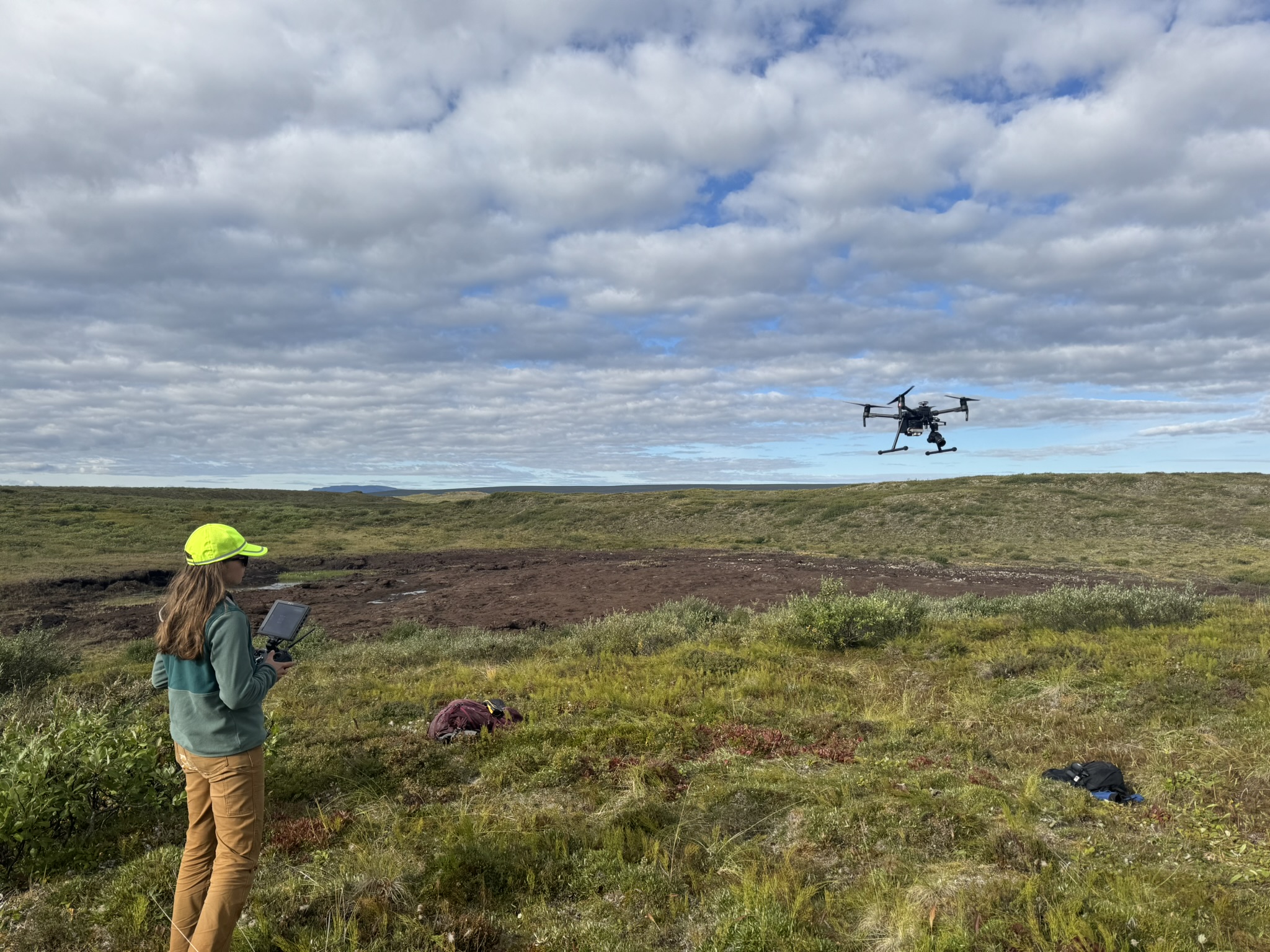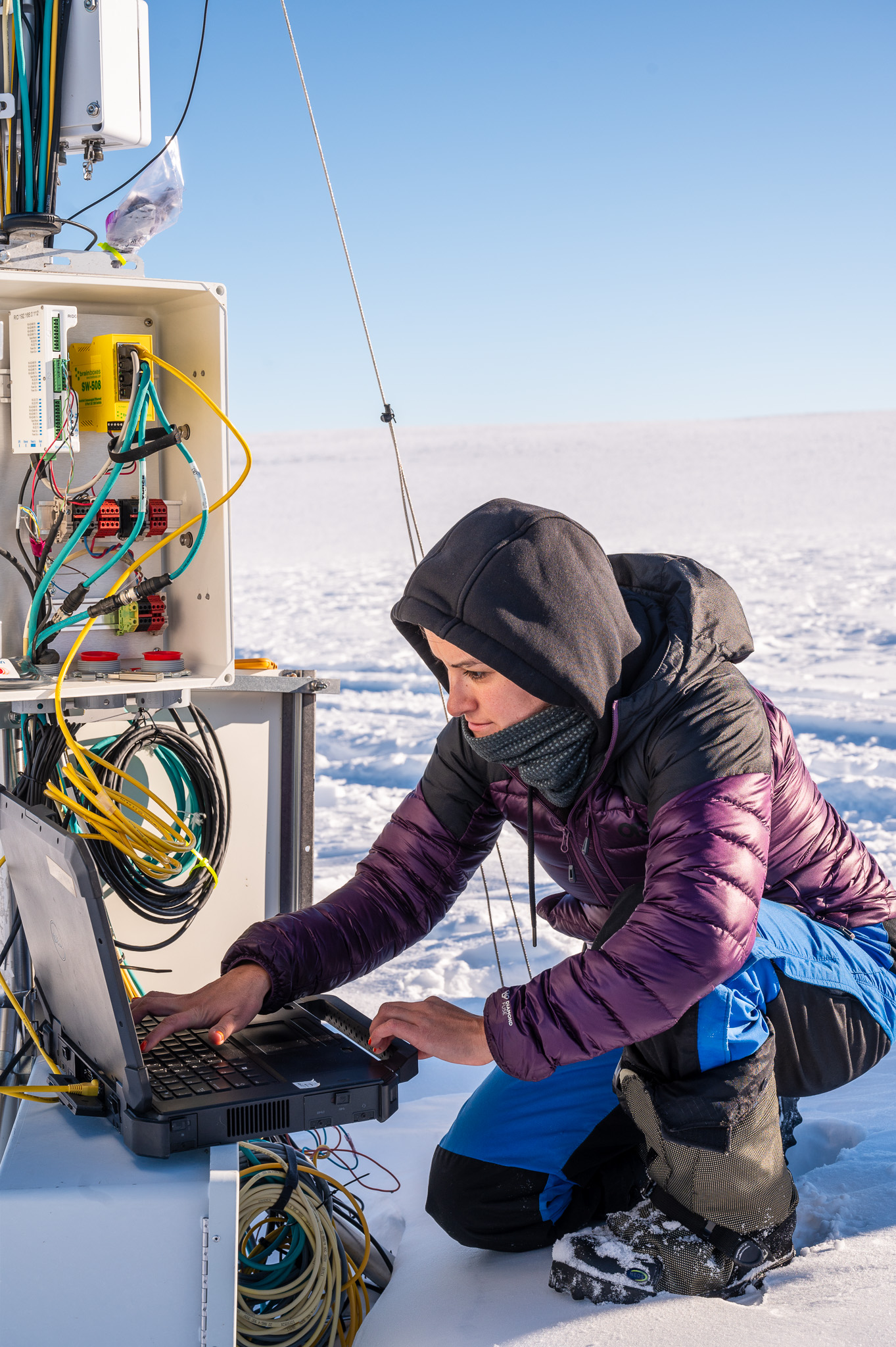
Toolik Field Station is located in the northern foothills of the Brooks Range and provides access to a wide variety of ecosystems in Arctic Alaska. Photo by Jason Stuckey/TFS.
Strengthening Arctic Research Through Open Data and Collaboration
Toolik Field Station has long been a hub for Arctic research. Located in Alaska’s Brooks Range and operated by the Institute of Arctic Biology at the University of Alaska Fairbanks with support from the U.S. National Science Foundation, Toolik hosts hundreds of scientists each year who come to study Arctic ecosystems, biodiversity, and the unique landscapes of the tundra.
The Arctic Data Center and Toolik share a common goal: to make Arctic science more open, connected, and useful to the people who live in, study, and care for these environments. Over the years, we’ve worked together to make it easier for researchers to manage, share, and preserve the data collected at the station.
Making Toolik Data Easier to Find and Use
A major piece of this collaboration is the Toolik Data Portal, a dedicated webpage hosted by the Arctic Data Center that aggregates data collected at the field station. The portal gathers long-term monitoring datasets, ecological experiments, and interdisciplinary studies that span everything from summertime soil measurements to long-term meteorological data.

Scientists from Toolik’s GIS and remote sensing team fly a research drone to collect high-resolution imagery for spatial analysis of a thermokarst land deformation, caused by permafrost thaw. Photo by Randy Fulweber.
Before the portal existed, Toolik data were scattered across many locations and not easily findable. Now, users can browse and download datasets through a single searchable interface, complete with detailed metadata documentation and links to related research. The result is a resource that not only preserves Toolik’s scientific record but also helps new projects build on decades of existing work.
The portal currently holds 556 datasets, including baseline monitoring data collected by Toolik’s Spatial and Environmental Data Center and continues to grow as new datasets are submitted. For example, the ADC is working with Toolik to archive the station’s many spatial datasets, like lake bathymetry or drone imagery. The portal also lists hundreds of publications that have come from Toolik scientists. Each addition represents a small piece of Toolik’s history, capturing the efforts of field teams who brave Arctic conditions to collect high-quality data year after year.
Connecting with the Research Community
The Arctic Data Center’s collaboration with Toolik extends well beyond the portal. Every few years, the Toolik community comes together for the All Scientists Meetings, gatherings that bring researchers, students, and staff together to share updates, collaborate, and plan for the future.
The Arctic Data Center Outreach Team was lucky enough to participate and host a workshop during the January 2025 meeting in Santa Barbara, CA. The workshop centered around Ethical Principles for Open-Access Data and included an introduction to the FAIR (Findable, Accessible, Interoperable, Reusable) and CARE (Collective Benefit, Authority to Control, Responsibility, Ethics) principles for responsible research. Attendees were given two case studies and participated in small group discussions centered around data accessibility and ethics. Workshops like this educate and motivate researchers to explore the ethics behind their data and better prepare them for submission to the Arctic Data Center.
Bridging Fieldwork and Data Management
Beyond workshops, the collaboration between the Arctic Data Center and Toolik Field Station helps researchers connect the dots between fieldwork and long-term data preservation. Many Toolik projects collect data under challenging conditions and over long timescales, which makes planning for data management especially important.
Through training courses and one-on-one support, the Arctic Data Center helps Toolik researchers incorporate data management planning, metadata collection, and documentation into their data collection routines. By treating data management as an essential part of fieldwork, not just an end-of-project task, researchers can more easily prepare their datasets for publication and ensure that the information they gather remains useful for future studies.

Environmental Data Center technician Mayra Meléndez González troubleshoots sensors on an eddy covariance tower near Toolik Field Station in the winter. Photo by Joseph Franich.
Amplifying Research Impact and Data Reuse
Making Toolik data openly available through the Arctic Data Center has far-reaching effects. The portal’s datasets are cited and reused by other researchers, and users can find and build on Toolik data without needing to track down individual investigators or request access to old records.
This openness leads to more collaborative work, more reproducible science, and greater visibility for the researchers who share their data. Each dataset published through the portal contributes to a larger understanding of Arctic systems and helps spark new questions, experiments, and discoveries across the research community.
Looking Ahead
The collaboration between the Arctic Data Center and Toolik Field Station is a model for how open data, community engagement, and thoughtful stewardship can strengthen research in the Arctic. By connecting fieldwork with long-term preservation, providing training and support, and making datasets widely accessible, this partnership ensures that the knowledge collected at Toolik continues to inform science for years to come. As the portal grows and new generations of researchers join the station, the story of Toolik’s data is still being written and will be more connected, more discoverable, and more impactful than ever.

Written by Nicole Greco
Community Engagement and Outreach Coordinator
